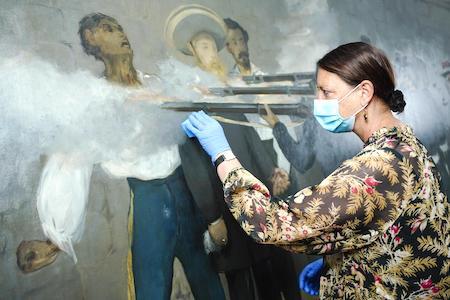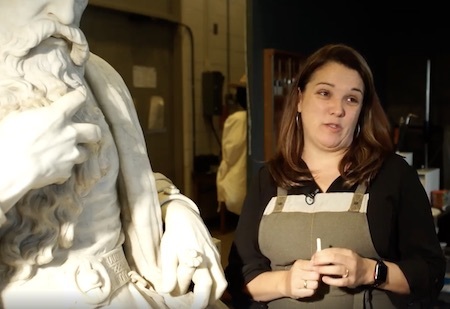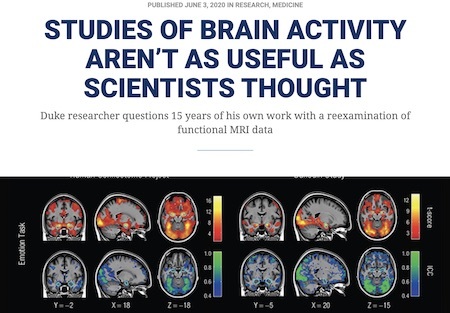Marc Abrahams's Blog, page 115
June 11, 2020
The personality of rocks at the Bergamo, Italy, Science Pre-Festival
The Bergamo Science Festival this year has a pre-festival which includes:
“a competition created in collaboration with the Caffi Museum, dedicated to rocks and minerals and conducted on the BergamoScienza Instagram profile. Two rocks will be presented by a geologist each week. The aim is to reproduce the study that won the IgNobel prize for economics 2016, in which the emotions that some rocks transmitted to the public were studied.”
It will be streamed online.


June 10, 2020
With Patience and Spit, in the Art Museum
“With patience and spit” is the headline in the German magazine Monopol, about the application of Ig Nobel Prize-winning knowledge to the cleaning of a historic painting. Marcus Boxler reports, in Monopol:
A highlight of the Mannheim art gallery collection is currently being cleaned up: The oil painting “The execution of the Emperor Maximilian of Mexico” by Édouard Manet is being cleaned thoroughly – with a rather unexpected household remedy…
Katrin Radermacher, head of the restoration department, works with medical face mask and rubber gloves on the painting “The execution of Emperor Maximilian of Mexico”…
Special saliva treatment? What at first sounds like a joke is, according to Radermacher, a “completely sensible and sensible method”, provided the processed material allows it. “The saliva is perfectly suitable because it contains special enzymes that break up surface contamination,” explains the Mannheim restorer.
Three Portuguese scientists have researched exactly this curious and outdated method and in 2018 received the so-called “Ig Nobel Prize” for chemistry – a kind of satirical anti-Nobel Prize for (scientifically serious) research results that “first make you laugh and then make you smile.” Stimulate thinking “….
UPDATE: The North Carolina Museum of Art made a nice video showing how they used spit to clean one of their most prized statues. (Thanks to Polly Freeman Lyman for bringing this to our attention.)

Podcast Episode #212: “Kansas Is Flatter Than a Pancake”
Kansas is Flatter Than a Pancake, Fish Drink, Knight of the Living Dead, Improbable Sex, Messy Desk Effect, Journeys of Toothbrushes, Eternity Smells a Rat, Icky Cutesy, Are All Accountants Gray?, and Where Do You Sit in Bulgaria?
In episode #212, Marc Abrahams shows some unfamiliar research studies to Jean Berko Gleason, Chris Cotsapas, Nicole Sharp, and Melissa Franklin. Dramatic readings and reactions ensue.
Remember, our Patreon donors, on most levels, get access to each podcast episode before it is made public.
1. Jean Berko Gleason encounters:
“Kansas is flatter than a pancake“, Mark Fonstad, William Pugatch, and Brandon Vogt, Annals of Improbable Research, vol 9, no. 3, May-June 2003, pp. 16-18.
2. Chris Cotsapas encounters:
“Measurement of Drinking Rates in Fish,” D.H. Evans, Comparative Biochemistry and Physiology, vol. 25, no. 2, May 1968, pp. 751-3.
3. Marc Abrahams encounters:
“High Court Rescues ‘Living Dead’ of Azamgarh,” Indian Express, July 25, 1999./ “Back to Life in India, Without Reincarnation,” New York Times, October 24, 2000. / “Mritak Sangh And Lal Bihari,” The Financial Express, January 7, 2003.
4. Jean Berko Gleason encounters:
“Effects of Coitus on Nasal Temperature,” N.D. Fabricant, Fertility and Sterility, vol. 11, March 1960, pp. 195–19.
“Feelings of Regret Following Uncommitted Sexual Encounters in Canadian University Students,” Maryanne L. Fisher, Kerry Worth, Justin R. Garcia, and Tami Meredith, Culture, Health and Sexuality, vol. 14, no. 1, 2012, pp. 45-57.
“Postcoital Visual Loss Due to Valsalva Retinopathy,” Michaels, Luke, Naing Latt Tint, and Philip Alexander, BMJ Case Reports, epub October 23, 2014.
5. Nicole Sharp encounters:
“The Messy Desk Effect — How Tidiness Affects the Perception of Others,” Sarah Sitton, Journal Of Psychology, vol. 117, no. 2, 1984, pp. 263-7.
6. Jean Berko Gleason encounters:
“The Swallowing of a Full-Sized Toothbrush: Report of a Case from the Los Angeles General Hospital,” C.A. Johnson, California and Western Medicine, vol. 26, no. 2, 1927, pp. 210.
“Toothbrush Swallowing,” Allan D. Kirk, Bert A. Bowers, Joseph A. Moylan, and William C. Meyers, Archives of Surgery, vol. 123, 1988, pp. 382–4.
“Inadvertent Swallowing of Toothbrush,” Dinesh Lal, New Zealand Medical Journal, vol. 123, no. 1321, 2010, pp. 69–70.
7. Chris Cotsapas encounters:
“Chlorine-36 in Fossil Rat Urine: An Archive of Cosmogenic Nuclide Deposition During the Past 40,000 Years,” M. A. Plummer, F. M. Phillips, J. Fabryka-Martin, H.J. Turin, P.E. Wigand, and P. Sharma, Science, vol. 277, 1997, pp. 538-41.
8. Jean Berko Gleason encounters:
“Body Snatching: A Grave Medical Problem,” Julia Bess Frank, Yale Journal of Biology and Medicine, vol. 49, no. 4, 1976, pp. 399–410.
“The Study of the Human Remains from Nubia: the Contribution of Grafton Elliot Smith and His Colleagues to Palaeopathology,” H.A. Waldron, Medical History, vol. 44, no. 3, 2000, pp. 363–88.
9. Marc Abrahams encounters:
“Beyond the Boring Grey: The Construction of the Colourful Accountant,” by Ingrid Jeacle, journal Critical Perspectives on Accounting, 2008.
10. Jean Berko Gleason encounters:
Karev, George B. (2000). ‘Cinema Seating in Right, Mixed and Left Handers.’ Cortex 36 (5): 747–52.
–– (1993). ‘Arm Folding, Hand Clasping and Dermatoglyphic Asymmetry in Bulgarians.’ Anthropologischer Anzeiger 51(1): 69–76.
Weyers, Peter, Annette Milnik, Clarissa Müller, and Paul Pauli (2006). ‘How to Choose a Seat in Theatres: Always Sit on the Right Side?’ Laterality 11 (2): 181–93.
McManus, I. C. “Scrotal asymmetry in man and in ancient sculpture.” Nature259, no. 5542 (1976): 426-426.
Bruce Petschek, Audio Engineer
Jon Shedler, Audio Engineer
Seth Gliksman, Production Assistant
Available on Spotify, Apple Podcasts, Overcast, Google Podcasts, AntennaPod, BeyondPod and elsewhere!

June 9, 2020
How is a computer programmer like a dead salmon?
One statement, at least, in a June 5, 2020 press release would be hard to dispute: “Our goal was to develop a completely new approach to better understand the cognitive processes involved in programming.”
The press release, issued by the Chemnitz University of Technology, comes with the headline “Programming ‘language’: Brain scans reveal coding uses same regions as speech“. The press release goes on to explain: “the researchers used imaging techniques from the neurosciences and investigated which brain areas are activated when reading and understanding computer programs. Their amazing result: Programming is like talking.”
The reasoning is coded into a research paper: “Studying Programming in the Neuroage: Just a Crazy Idea? Programming research has entered the Neuroage,” Janet Siegmund [pictured here], Norman Peitek, André Brechmann, Chris Parnin, Sven Apel, Communications of the ACM, vol. 63, no. 6, June 2020, Pages 30-34.
(Thanks to Ed Belove for bringing this to our attention.)
Discoveries in the Age of Dead Salmon
As we mentioned a few days ago, thanks to a dead salmon’s imagined imaged thoughts, and further thanks to some subsequent research by human admirers of that dead salmon, this is a time of great discoveries in the fMRI neuroscience research community.

June 8, 2020
Ungluing Superglued™ eyelids – the options [study]
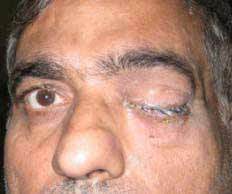 Gluing-on false eyelashes with cyanoacrylate (CA) adhesive – like say, Superglue
Gluing-on false eyelashes with cyanoacrylate (CA) adhesive – like say, Superglue – is widely regarded as a very bad idea. However, in the case that that one’s eyelids do get superglued
– is widely regarded as a very bad idea. However, in the case that that one’s eyelids do get superglued together, and one presents oneself at a hospital casualty department, what can medics do to remove the glue?
together, and one presents oneself at a hospital casualty department, what can medics do to remove the glue?
In 2008, a US-based research team investigated the effectiveness (or otherwise) of 5 chemical compounds – Bacitracin, K-Y Jelly, Baby shampoo, Acetone and Water, to unglue eyelids that have accidentally got stuck together during cyanoacrylate-assisted false-eyelash applications.
Unfortunately, none of the chemicals was found to be effective (with the exception of acetone, which, though partially useful, can itself cause eye injuries). The research team therefore recommend that :
“At this time, we believe that eyelash adhesion may best be treated by watchful waiting.”
Without treatment, the glue usually comes unstuck in about six days or so.
See: Evaluation of Treatments for Cyanoacrylate Eyelash Adhesion Using an In-Vitro Model, in Cutaneous and Ocular Toxicology, Volume 27, issue 1, 2008.
Notes:
• Unfortunately, the paper doesn’t include any photos. The image above is from a somewhat related paper, which shows a Superglued eyelid. See : Role of Temporary Tarsorrhaphy Using Super Glue in the Management of Corneal Disorders, Pak J Ophthalmol 2009, Vol. 25 No. 3. It documents the medical uses of Superglue
eyelid. See : Role of Temporary Tarsorrhaphy Using Super Glue in the Management of Corneal Disorders, Pak J Ophthalmol 2009, Vol. 25 No. 3. It documents the medical uses of Superglue to deliberately (temporarily) glue eyelids together.
to deliberately (temporarily) glue eyelids together.
• Although the exact numbers are unknown, “over the past decade the senior author has treated several patients with their eyelids glued shut”
• Bacitracin isn’t a solvent, it’s an antibiotic cream (used on chickens, turkeys and humans) and was investigated because of anecdotal reports of its effectiveness. It was voted ‘Allergen of the Year in’ 2003 by the American Contact Dermatitis Society.
Research research by Martin Gardiner

June 6, 2020
Pocket-Sized #1013: “Death to Improve Basketball”
Death to Improve Basketball
In this Pocket-Sized episode #1013, Marc Abrahams shows an unfamiliar research study to Jean Berko Gleason. Dramatic readings and reactions ensue.
The research mentioned in this episode is featured in the special Psychology issue (vol. 26, #1) of the Annals of Improbable Research magazine.
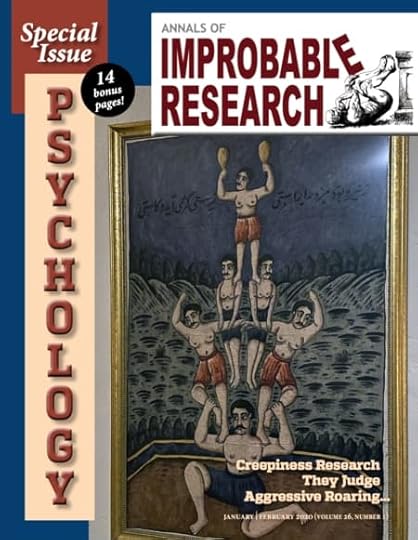
Remember, our Patreon donors, on most levels, get access to each podcast episode before it is made public.
1. Jean Berko Gleason encounters:
“He Dies, He Scores: Evidence that Reminders of Death Motivate Improved Performance in Basketball,” Colin A. Zestcott, Uri Lifshin, Peter Helm, and Jeff Greenberg, Journal of Sport and Exercise Physiology, vol. 38, no. 5, 2016, pp. 470-480.
Seth Gliksman, Production Assistant
Available on Spotify, Apple Podcasts, Overcast, Google Podcasts, AntennaPod, BeyondPod and elsewhere!

June 5, 2020
fMRI Brain Research: The Dead Salmon Has Lots of Company
Quite a lot of brain research uses the technique called fMRI—and now quite a lot of research shows that fMRI brain research fairly often leads to nonsense or bewilderment.
A New Study Turns Up Much Nothingness
A new study tries to sum up the situation: “What Is the Test-Retest Reliability of Common Task-Functional MRI Measures? New Empirical Evidence and a Meta-Analysis,” Maxwell L. Elliott, Annchen R. Knodt, David Ireland, Meriwether L. Morris, Richie Poulton, Sandhya Ramrakha, Maria L. Sison, Terrie E. Moffitt, Avshalom Caspi, and Ahmad R. Hariri, Psychological Science, epub 2020.
The authors, at Duke University, the University of Otago, and King’s College London, explain:
“Identifying brain biomarkers of disease risk is a growing priority in neuroscience…. Measuring brain activity using task functional MRI (fMRI) is a major focus of biomarker development; however, the reliability of task fMRI has not been systematically evaluated. We present converging evidence demonstrating poor reliability of task-fMRI measures….
Collectively, these findings demonstrate that common task-fMRI measures are not currently suitable for brain biomarker discovery or for individual-differences research.”
(Thanks to Edward Tufte for bringing this to our attention.)
Legacy of the Dead Salmon
The 2012 Ig Nobel Prize for neuroscience was awarded to Craig Bennett, Abigail Baird, Michael Miller, and George Wolford, for demonstrating that brain researchers, by using complicated instruments and simple statistics, can see meaningful brain activity anywhere — even in a dead salmon.
They documented their research, in the study “Neural Correlates of Interspecies Perspective Taking in the Post-Mortem Atlantic Salmon: An Argument For Multiple Comparisons Correction,” Craig M. Bennett, Abigail Baird, Michael B. Miller, and George L. Wolford, Journal of Serendipitous and Unexpected Results, vol. 1, no. 1, 2010, pp. 1-5. They first presented that work in poster form at a conference in 2009.
That paper drew outrage from many neuroscientists, as did the awarding of that Ig Nobel Prize. Many other neuroscientists were pleased, though. Among them was Bethany Brookshire, then blogging under the pen name “Scicurious”, for Scientific American. Brookshire’s report about that Ig Nobel Prize began:
IgNobel Prize in Neuroscience: The dead salmon study
I have to say that I am incredibly pleased that this study won the Ignobel. Not just because it’s a really fun study, but also because it really is one of those studies that makes you laugh, and then makes you THINK. And in the case of this study in particular, it has changed a lot about how we think about making corrections in fMRI, and may have actually really affected the way the data are published. And so, I present to you: the dead salmon study….
Building on the Foundation of the Dead Salmon
The new, 2020 “What Is the Test-Retest Reliability…” study is drawing favorable attention from many neurosciences. It builds on the knowledge found by the dead salmon study. Duke University issued a proud press release about it, though for whatever reason did not mention the dead salmon. The press release begins:
STUDIES OF BRAIN ACTIVITY AREN’T AS USEFUL AS SCIENTISTS THOUGHT
Duke researcher questions 15 years of his own work with a reexamination of functional MRI data
Beauty
There’s one thing most everyone agrees on: fMRI studies produce pretty pictures.

June 3, 2020
Pocket-Sized #1012: “Monkeys and College Students”
Monkeys and College Students
In this Pocket-Sized episode #1012, Marc Abrahams shows an unfamiliar research study to Mason Porter. Dramatic readings and reactions ensue.
The research mentioned in this episode is featured in the special Mathematics issue (Vol. 16, #4) of the Annals of Improbable Research Magazine.
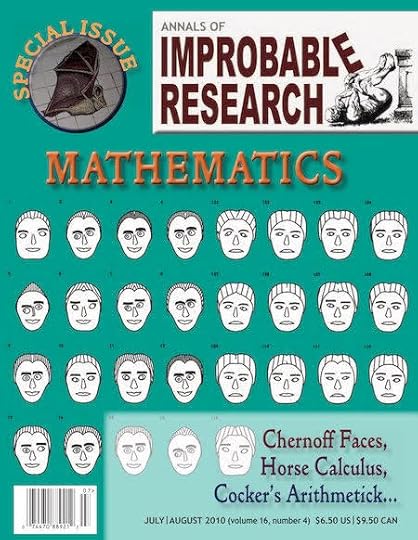
Remember, our Patreon donors, on most levels, get access to each podcast episode before it is made public.
1. Mason Porter encounters:
“Basic Math in Monkeys and College Students,” Jessica F. Cantlon and Elizabeth M. Brannon, PLoS Biology, vol. 5, no. 12, 2007, e328.
Seth Gliksman, Production Assistant
Available on Spotify, Apple Podcasts, Overcast, Google Podcasts, AntennaPod, BeyondPod and elsewhere!

June 2, 2020
Dead Duck Day 2020 postponed till 2021
The 25th Dead Duck Day, on June 5th, will be postponed till 2021. Due to the COVID-19 pandemic, public open air gatherings are not allowed. So be on the lookout for the special (postponed) 25th anniversary edition in 2021.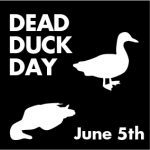
This year, Dead Duck Day will have only two participants – me and the stuffed duck, accompanied by a bottle of beer, just as on the very first Dead Duck Day celebration, 25 years ago.
Kees Moeliker
Of course everybody is free and invited to have private Dead Duck Day celebrations, anywhere in the world, to commemorate the dramatic death of the duck — and the tragedy of billions of other birds that die from colliding with glass buildings.
Photographic and/or video images of the private short Dead Duck Day ceremony in Rotterdam will be posted here and on social media. #DeadDuckDay
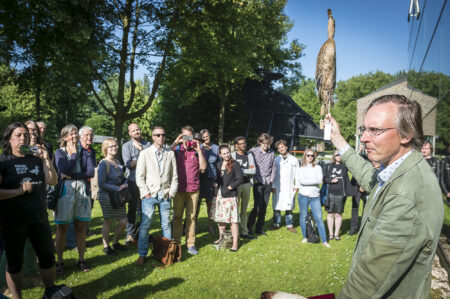
Here is a photo from Dead Duck Day, when a paucity of pandemics permitted people to gather together in celebration. (photo Maarten Laupman)
Ig Nobel Duck
The mallard duck that is a vital part of Dead Duck Day became known to science as the first (documented) ‘victim’ of homosexual necrophilia in that species, and earned its discoverer the 2003 Ig Nobel Biology Prize.

June 1, 2020
Vexations, over and over, yet again
There’s been another artful repetition of the artfully repetitious musical art piece called “Vexations,” composed by Eric Satie. (Thanks to Deb Kreuze for bringing it to our attention.)
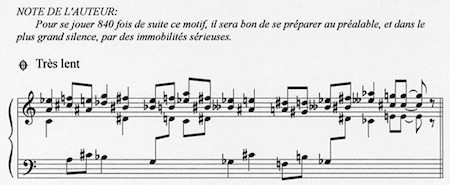
This new performance gets a loving appreciation by Joshua Barone, in The New York Times:
‘I Just Let Myself Go’: Igor Levit on Surviving a Satie Marathon
The pianist livestreamed “Vexations,” a solo of four lines repeated 840 times, to evoke the crisis facing artists during the coronavirus pandemic.
The pianist Igor Levit is always one-upping himself. His recordings have swollen from a collection of four Beethoven sonatas to the entire cycle; his performances, from a traditional recital to, as of Sunday, a livestream lasting over 15 hours.
In an extraordinary act of musical self-flagellation, Mr. Levit played Erik Satie’s “Vexations” — a mysterious and absurd work consisting only of four lines repeated 840 times — to evoke and draw attention to the difficulties facing artists during the coronavirus pandemic….
Here’s video of about twelve hours of that performance by Igor Levit:
An Earlier, Meticulously Monitored Performance
Some years ago, we wrote about a scientific examination of another pianist who took on the task of enduring that piece of music:
Is playing the piano for 28 hours harmful?
28 hours at the piano is enough to vex anyone – but not these researchers
German and Austrian researchers analysed what happened to pianist Armin Fuchs when he spent more than a full day playing over and over again, nonstop, an oddly-named piece of music by a French composer. They also analysed what happened to the music. This was a tour de force of artistic and neurological repetition.
The research team – Christine Kohlmetz, Reinhard Kopiez and Marc Bangert of the Hanover University of Music and Drama, and Werner Goebl and Eckart Altenmuller of the Austrian Research Institute for Artificial Intelligence, in Vienna – published a pair of monographs in 2003 describing what they measured in the pianist….
Here’s video of a just a few minutes of that experimental monitoring of Armin Fuchs:

Marc Abrahams's Blog
- Marc Abrahams's profile
- 14 followers


